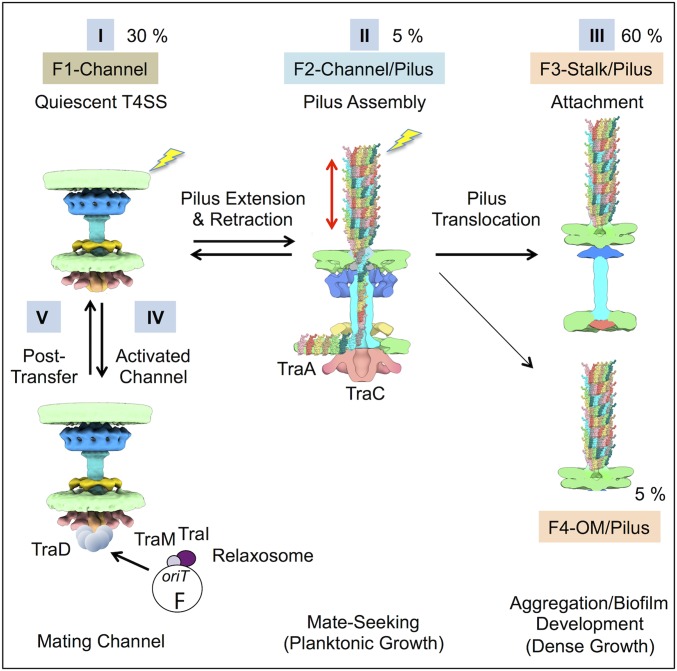Fig. 5.
A structure-driven assembly pathway for the F transfer system. Step I: Tra subunits assemble initially as a quiescent F1-Channel complex. Step II: The F1 complex transitions to the F2-Channel/Pilus for dynamic extension and retraction of the F pilus in a “mate-seeking” mode. Dynamic F pilus extension and retraction by the F2 structure favors formation of distant cell-cell contacts during low cell density, e.g., planktonic, growth. Step III: Assembled F pili are alternatively deposited onto distinct platforms, yielding the F3-Stalk/Pilus or F4-OM/Pilus structures. The presumptively static F3 and F4 structures promote nonspecific aggregation and biofilm development; in polymicrobial settings, these dense growth conditions favor formation of mating junctions. Step IV: Recipient cell contact (lightning bolts) triggers F pilus retraction and recruitment of the TraD receptor and F plasmid substrate to activate the DNA transfer or “mating” mode. Step V: Following plasmid transfer, donor and recipient cells disengage and the “mating” channel reverts to the F1 quiescent complex. The relative percentages of each complex visualized on E. coli minicells by in situ CryoET are shown.

